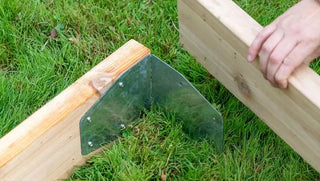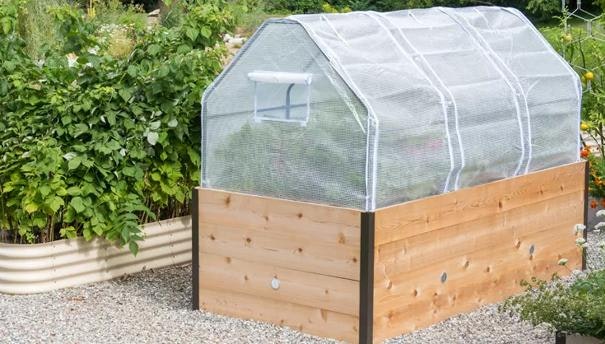Cost-effective gardening is about maximizing your resources; it's not just about spending less, but also using your assets wisely. Here are 10 tips for budget friendly growth.
1. Plan & Plant Thoughtfully
Choose plants that thrive in your local climate to prevent unnecessary expenses i.e., needing replacements. Look for perennial plants that return year after year; they provide lasting beauty and often require less maintenance than annuals. Native species usually also require less maintenance and less water, saving you both time and money. They have the added benefit of attracting beneficial wildlife, reducing your need to spend on interventions.
2. Embrace the Satisfaction of DIY
Do-it-yourself or DIY gardening projects present a creative and fulfilling way to cut costs. Many items around your home can be repurposed for garden use, which not only saves money but also reduces waste. Plus, such items can add personality to your garden. Or, you may choose to build your own raised beds—and if so, we can help. We offer a collection of products designed for this very purpose, from durable cedar boards to rust-proof aluminum corners. These quality materials mean your bed(s) will stand the test of time.
3. Maximize Your Space & Budget with Container Gardening
Container gardening is perfect for those with limited space and/or funds, as it allows you to grow on a smaller scale—think a patio or even a windowsill. Choosing the right containers is key. Consider repurposing items you already have, but ensure they offer good drainage to prevent waterlogging. If you’re open to spending, look for high-quality pots and planters that will perform long-term. Fill them with plants that thrive in more confined spaces. Herbs, cherry tomatoes, and peppers are excellent edible choices; they grow well in containers and typically provide a good yield within a small footprint. Consider using trellising or even hanging planters to grow vertically as well. Just be sure to pay close attention to soil quality; use a good potting mix and consider adding slow-release fertilizer for nutrition.
4. Compost!
Another cost-effective strategy is to enrich your soil naturally. Composting is an excellent way to use no-cost kitchen scraps and garden waste to enhance soil fertility, a method that’s both economical and environmentally friendly.
5. Grow Your Own Groceries
Vegetable gardening is both rewarding and cost-effective; it reduces grocery bills and positions fresh, organic produce at your fingertips. To grow your own produce without breaking the bank:
- Start by planning your garden layout. We recommend using the square-foot gardening technique to maximize your harvest. Use our free Kitchen Garden Planner to generate a square-foot planting plan.
- Consider companion planting to naturally deter pests and increase yields. This method minimizes the need for chemical inputs that can be both economically and environmentally costly.
- Opt for seeds instead of seedlings. Seed packets are often cheaper and offer more variety. Consider starting seeds indoors before transplanting them outside.
- Again, maintain soil health by incorporating natural fertilizers: compost, well-rotted manure, or green manure can enhance soil fertility.
- Stagger plantings. This strategy, known as succession planting, ensures a continuous harvest throughout the growing season. It maximizes yield without requiring more space.
- Preserve excess produce by freezing, canning, or drying. This practice extends the benefit of your garden throughout the year, further reducing grocery expenses.
6. Save & Swap Seeds
Saving seeds is an ancient practice that reduces costs and allows gardeners to preserve plant varieties. Heirloom seeds, in particular, are invaluable for maintaining biodiversity. Once they’ve dried and turned brown, harvest seeds from your healthiest plants. Label, then store them in a cool, dark place for future seasons.
Seed swapping is an enjoyable way to expand your garden variety. Join local garden clubs or community events to exchange seeds or pest- and disease-free seedlings. Gardener’s Supply garden centers host a seed swap annually. Through seed saving and swapping, you can build a diverse and resilient garden at a low cost. This sustainable practice empowers you to cultivate an array of plants suited to your local climate and underscores the connective joy of gardening.
7. Water Wisely
Efficient water use is crucial to cost-effective gardening. Avoid overwatering; it wastes water and harms plants. Use mulch as (ideally organic materials like straw or wood chips) an insulator, preserving soil moisture and reducing evaporation; it’s an inexpensive solution that benefits both your garden and budget. Invest in a rain barrel to collect and store rainwater. This ultimately provides a sustainable, free source of water for your garden. It's an eco-friendly choice that can significantly reduce water bills.
Additional water-saving practices include using drip irrigation to target water efficiently, watering plants in the early morning or late afternoon to reduce evaporation, and utilizing greywater from household activities. By using such conservation techniques, you can save both water and money while promoting a healthier garden ecosystem.
8. Use Integrated Pest Management
Take an integrated pest management, or IPM approach. First, use biological controls to manage pests naturally. Start by attracting beneficial insects like ladybugs and lacewings. Planting a variety of flowers, preferably native varieties, can draw these helpful bugs and others that predate insect pests. Apply this concept up the “food chain,” and consider making appropriate habitat adjustments in your yard. Additionally, cultural practices like using physical, humane barriers can prevent pest invasions. Floating row covers made from lightweight fabric protect plants while allowing sunlight, air, and moisture to circulate. They’re a cost-effective way to shield plants from larger pests.
Other wallet friendly remedies include garlic sprays or clips for repelling insects, neem oil for general pest deterrence, and cayenne pepper solution to deter herbivores. These solutions empower you to tackle garden pests inexpensively and effectively, ensuring your plants remain healthy and thriving.
9. Shop Smart for Garden Tools & Supplies
A thriving budget friendly garden requires the right gear. Focus on investing in basic, but high-quality and durable tools that won’t need replacing. Essential items include a sturdy trowel, pruners, and a watering can. These tools form the backbone of any gardener's kit.
Shop clearance sections like ours, where you can save up to 60%. As a side note, take a moment to subscribe to our email list—we regularly send out promo codes. Be on the lookout for other ways to save, i.e., by purchasing a recycled tubtrug vs. a new one, taking advantage of price reductions like our recent cedar raised bed collection adjustments, or, if you’re in New England, shopping our garden center sales.
10. Leverage Technology & Community
Take advantage of educational resources available online. Ours include:
- Comprehensive advice library with hundreds of articles
- Ask a Gardener help feature for 1-1 guidance
- Digital tools such as our Soil Calculator
- Engaging, active social media channels (see links in footer)
Gain knowledge and access to new resources by connecting with others in the gardening community. Our New England garden centers regularly host free workshops on a wide variety of topics, so if you’re local be sure to join in to boost your knowledge and build relationships.




